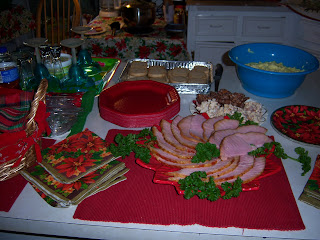The most famous image that welcomes each New Year for many millions around the world is the dropping of the Ball in Times Square, NYC, on New Year's Eve.
The tradition began more than a century ago when Adolph S. Ochs, publisher of the New York Times, hired Jacob Star, a metalworker to build & lower the first Ball, a 700 pound wood & iron ball--5 feet in diameter & illuminated by 100 - 25 watt bulbs, to mark the passing from 1907 to 1908.
 This year's new Times Square New Year's Eve Ball is a geodesic sphere, 12 feet in diameter, double the size of previous balls & weighs 11,875 pounds. It is covered in 2,668 triangle shaped crystals made in Ireland by Waterford artisans, most of these featuring the design of an angel with uplifted wings, the rest adorned with a starburst. It is powered by 32,256 Philips Luxeon Rebel LEDs designed to create a spectacular multi-colored kaleidoscopic effect of more than 16 million colors & billions of patterns.
This year's new Times Square New Year's Eve Ball is a geodesic sphere, 12 feet in diameter, double the size of previous balls & weighs 11,875 pounds. It is covered in 2,668 triangle shaped crystals made in Ireland by Waterford artisans, most of these featuring the design of an angel with uplifted wings, the rest adorned with a starburst. It is powered by 32,256 Philips Luxeon Rebel LEDs designed to create a spectacular multi-colored kaleidoscopic effect of more than 16 million colors & billions of patterns.The cost of the New Year's Eve Ball? Two million dollars, twice as much as the last ball built in 2007. The ball drops 77 feet in 60 seconds. Before 1995, it was done by 'six guys with ropes & a stopwatch'. In 1995, computer controls were added and now it's 'one guy & a button for the winch', according to Countdown Entertainment, that oversees the event.
The Ball has been lowered every year since 1907, with the exception of 1942 & 1943, when the ceremony was suspended due to the wartime 'dimout' of lights in NYC. The crowds still gathered in Times Square in those years & greeted the New Year with a minute of silence followed by the ringing of chimes from sound trucks parked at the base of the tower---symbolic of the past, when New Yorkers gathered at Trinity Church in Lower Manhattan, where the chiming of the bells 'rang out the old & rang in the new'.
The original ball was replaced by Jacob Star's company, Artkraft Strauss in 1920 with one made of wrought iron, then in 1955 it was again replaced with an aluminum ball that weighed just 200 pounds.
In 1981, to reflect the 'I Love New York' campaign, red lights & a green stem were added to make it an apple.
A more traditional white ball replaced the apple in 1987 & was upgraded with strobe lights, rhinestones, computer controls, until it was retired in 1998.
Waterford Crystal designed the Millennium Ball for the 2000 ceremony & has rebuilt or tweaked it each year since. The Millennium Ball, is in the so-called ball vault in the building's basement. The Centennial Ball, built in 2007 went on display this month at the new Times Square Information Center. And the aluminum ball (that became the Apple) between 1955 to 1998 is in Atlanta at the headquarters of Jamestown, the real estate concern that owns One Times Square.
The tradition of ball 'dropping' to signal the passage of time dates back long before New Year's
Eve was ever celebrated in Times Square. The first, 'time-ball' was installed atop England's Royal Observatory at Greenwich in 1833. This ball would drop at one o'clock every afternoon, allowing the captains of nearby ships to precisely set their chronometers. The tradition is carried on today in places like the U.S. Naval Observatory in Washington, D.C.,where a time-ball descends from a flagpole at noon each day.
 So when the countdown begins on December 31, 2009, 10...9...8....7...6....5....4....3...2....Welcome to 2010
So when the countdown begins on December 31, 2009, 10...9...8....7...6....5....4....3...2....Welcome to 2010Happy New Year!










































